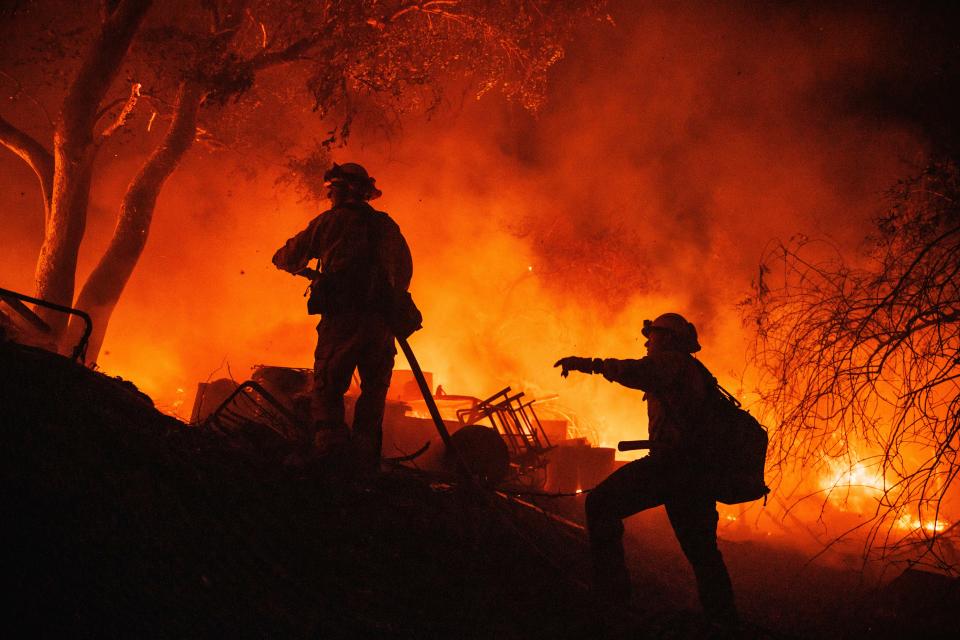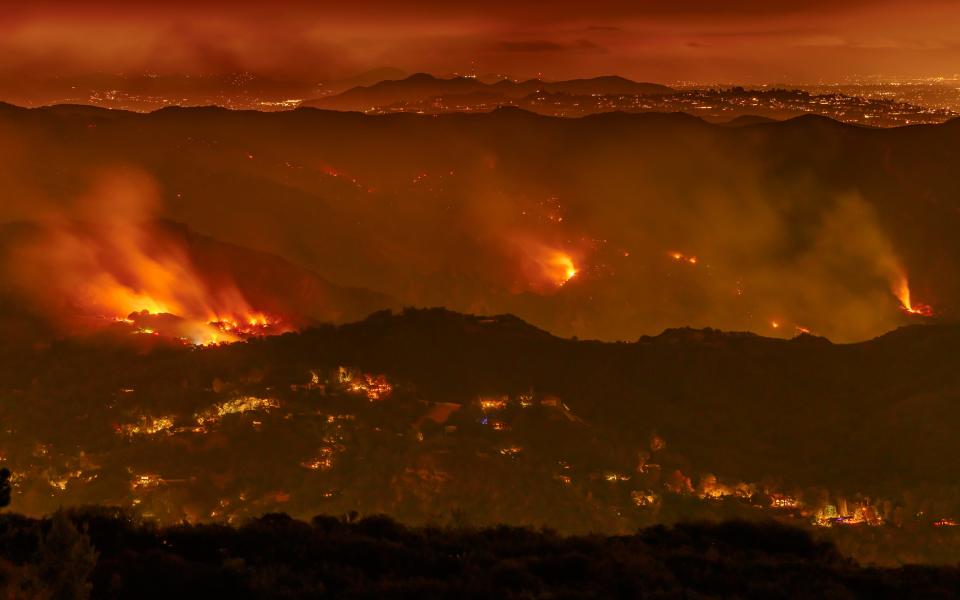Climate change fueled California's recent surge in catastrophic wildfire seasons, study says
It's all on us.
The recent decadeslong surge in catastrophic wildfires in California is almost entirely due to climate change, a new study published Monday reports.
“We show that nearly all of the observed increase in burned area in California over the past half-century is attributable to human-caused climate change,” said study co-author Don Lucas, a scientist from the Lawrence Livermore National Laboratory in Livermore, California.
The research was published in the peer-reviewed Proceedings of the National Academy of Sciences.

How does climate change worsen wildfires?
Scientists say human-caused climate change is caused by the burning of fossil fuels such as oil, coal and gas, which release greenhouse gases such as carbon dioxide and methane into the atmosphere and has caused global air and ocean temperatures to rise to levels that cannot be explained by natural factors.
Along with fueling extreme weather events such as floods and hurricanes, it's also impacted the extent and severity of wildfire seasons in the U.S. "Climate change, primarily caused by the burning of fossil fuels, is increasing the frequency and severity of wildfires not only in California but also all over the world," the state of California's Air Resource Board said.
Over the past five years, wildfires have torched more than 38 million acres across the country, destroying thousands of homes and structures. Federal officials say extremes in drought and heat, fueled by climate change, are drying out forests in the West and Alaska and are the leading driver of an increase in fire weather.
'A climate damn emergency'
Some of the key factors linking wildfire risk to climate change outlined in the study include below-average precipitation, higher temperatures in the spring months, lower springtime mountain snowpack, hotter summer temperatures, more frequent heat extremes and a decrease in the number of rainy days during fire season.
In Northern California in 2021, for example, the Dixie Fire became the largest single wildfire in state history, burning about 1 million acres and more than 700 homes.
As fires raged in the state in 2020, California Gov. Gavin Newsom called it "a climate damn emergency."
The amount of land burned by fires in California has 'exploded'
The amount of land burned by wildfires has exploded in California in recent decades. In fact, the average summer burn area in forests in northern and central portions of California has increased by five times between 1996 and 2021 than between 1971 and 1995, the study said.
Fire risks: State Farm will no longer insure new homes in California because of wildfire risks
Specifically, according to the study, "the ten-largest California wildfires all happened in the last 20 years, five of which occurred in 2020 and eight after 2017. Besides their immense environmental impacts, these fires also have had widespread negative impacts on human health and mortality and numerous socio-economic consequences."
No natural factors involved
How were the scientists able to tease out the impacts of climate change on the fires? The research team, led by Marco Turco from the University of Murcia in Spain, used computers to model the climate drivers of summer wildfire activity in California, both with natural climate variation alone and with human-caused climate change effects.
Beginning in 2001, the team found, the drivers of increasing summer burn area are all due to climate change, with no natural factors involved.

Looking ahead, and what to do about it
The authors estimated that upcoming decades – between 2031 and 2050 – may experience an increase in the average summer burned area in California of up to 52% over the current average burned area. This takes into account the fact that repeated fires consume fuel and limit the activity of subsequent fires in the same area.
“We found that we can expect as much as a 50% increase in burned area from 2031 to 2050 relative to the past few decades,” said study co-author Amir AghaKouchak, a professor of civil and environmental engineering at the University of California, Irvine.
The study concludes, "as the current state of knowledge suggests, and our results strongly support, immediate action toward mitigating the impacts of global warming alongside intentional proactive land management practices that can improve the resilience of forested landscape to fire will all be necessary."
AghaKouchak confirms this, saying “our paper makes it clear that the problem is ours to fix and that we can take steps to help solve it. By acting now to reduce our carbon dioxide emissions and pursue more sustainable transportation, energy production and agricultural practices, we can reduce the adverse effects of global climate change.”
Contributing: Dinah Voyles Pulver, USA TODAY
This article originally appeared on USA TODAY: California wildfires are nearly all due to climate change, study says

